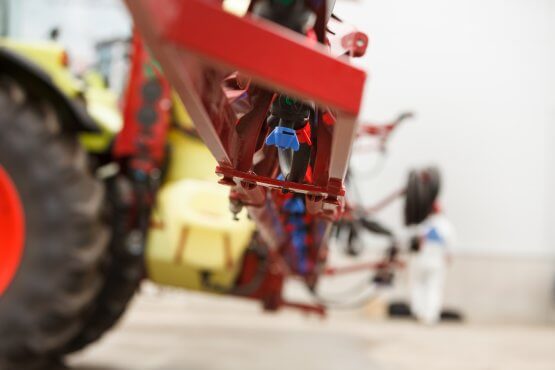Spray Rig Reveals Cost Savings with Installation of Separators

LAKOS vs. MAINTENANCE Spray Rig Application Reveals Cost Savings
The application is increasingly common: Lakos Separators installed on a series of air rigs and high-pressure oscillating booms (for insecticide and chemical spraying) to protect the fine-orifice nozzles from frequent plugging and excessive wear by sand & grit. After years of use, Tony Wisniewski of Greenbelt Spraying, Inc. in Sanger, California identifies the value of Lakos Separators on his seven rigs: “The individual spray nozzles now last four times longer, typically surviving two full seasons instead of ‘half-a-season’ (before the Lakos Separators were installed).” A quick check of the quantity of nozzles involved indicates the savings here alone are significant, not to mention the downtime involved and the labor necessary to replace each nozzle. “Plugged nozzles used to be a real problem, forcing my operators to inspect and clean them each time the rigs stopped for re-filling. With the Lakos Separators, we now rarely check them more than once a day.” When the water is sandy (and it usually is – see below), the time saved here typically allows each rig to make nearly two extra runs every hour. In a day, that’s a tremendous increase in productivity. In a season, it’s likely to more than pay for the cost of a separator.
“You can’t avoid sand & grit when you operate these rigs. It’s commonly in the available water and often, even in the chemicals. With Lakos Separators, we can control the problem. ” Independent studies confirm that sand & grit is evident in virtually any water source, including canals, rivers and wells. With regard to chemicals: Lime, for example, typically includes up to two pounds of sand in every 100 lb. sack. “We tried other techniques (screens & strainers), but they either didn’t work or couldn’t handle the pressure. Lakos Separators not only do the job but also require very little maintenance and that saves a lot of time and money.” The process of cleaning those strainers and screens consumed valuable time and required careful attention. Conversely, the Lakos Separators, installed in-line between the high-pressure pumps and the spray nozzle feed line, require nothing more than opening a manual valve at the purge for 10-15 seconds. . . and that’s it. “It’s also very possible,” says Wisniewski, “that by eliminating sand & grit from the spray water, we’re somewhat ‘protecting’ the fruit from damage caused by ‘sandblasting’.” For Tony Wisniewski, the value of Lakos Separators is reduced costs: Less nozzle wear. Less downtime. Less wasted labor. He simply didn’t “accept” such costs as common overhead.